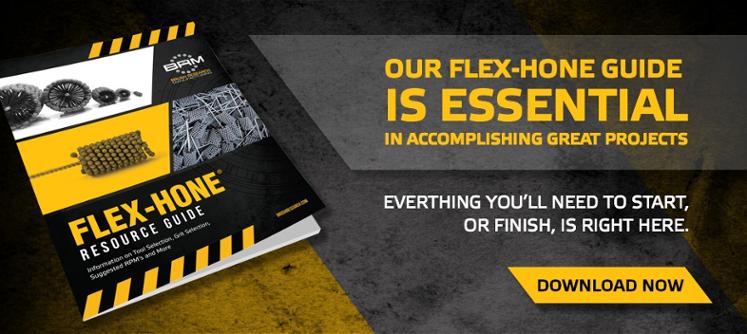 Many industrial cylinders are anodized to permit the use of aluminum instead of other, heavier metals. Anodizing, the process of electrochemically-converting the surface of an aluminum part to aluminum oxide, imparts a wear-resistant coating that’s very hard, very porous, and tactile. Anodizing provides other advantages as well, but this electrochemical process increases surface roughness. Anodizing also increases a cylinder’s outer diameter (OD) and decreases its inner diameter (OD).
Many industrial cylinders are anodized to permit the use of aluminum instead of other, heavier metals. Anodizing, the process of electrochemically-converting the surface of an aluminum part to aluminum oxide, imparts a wear-resistant coating that’s very hard, very porous, and tactile. Anodizing provides other advantages as well, but this electrochemical process increases surface roughness. Anodizing also increases a cylinder’s outer diameter (OD) and decreases its inner diameter (OD).
In Part 1 of this two-part series, Brush Research Manufacturing (BRM) explained how anodizing works and why it affects cylinder dimensions and surface finish. In Part 2, we’ll examine how flexible honing improves the surface finish of anodized parts such as hydraulic and pneumatic cylinders. Anodized components such as shock absorbers, valves, and pumps also need a fine surface finish for reliable sealing and long life. Many surface finishing tools are available, but the BRM Flex-Hone® provides unique advantages.
Rigid Honing Tools
Traditionally, manufacturers have used grinding, lapping, and rigid honing to improve the surface finish of anodized and hard-coat anodized parts. Machine setups are difficult, however, and they must be extremely precise. There are several reasons for this. First, the anodized coating is very hard. Second, the total coating thickness is very thin. Third, the high points and low points of the anodized coating are not absolutely symmetrical around the centerline of the cylinder ID.
When rigid honing is used with anodized parts, the honing stones only contact the coating’s high points. In other words, parts of the cylinder ID remain untouched. There are other issues with rigid honing, too. Because anodized coatings are relatively thin, only a very small amount of material should be removed. Yet rigid honing works best with heavier cuts and greater material removal. Fine cuts combined with tool loading can contributed to smeared surfaces.
Flexible Honing Tools
 The BRM Flex-Hone® tool provides a better way to improve the surface finish of anodized and hard-coated cylinders. With its unique construction, the Flex-Hone® is comprised of abrasive globules that are permanently laminated onto the ends of flexible nylon filaments. Because the diameter of the tool is greater than diameter of the bore, the Flex-Hone® is used in an oversized condition and is self-centering, self-aligning, and self-compensating for wear.
The BRM Flex-Hone® tool provides a better way to improve the surface finish of anodized and hard-coated cylinders. With its unique construction, the Flex-Hone® is comprised of abrasive globules that are permanently laminated onto the ends of flexible nylon filaments. Because the diameter of the tool is greater than diameter of the bore, the Flex-Hone® is used in an oversized condition and is self-centering, self-aligning, and self-compensating for wear.
Importantly, the Flex-Hone® tool’s abrasive globules “float” to ensure that all parts of the bore – and not just the high spots – are surface finished. Unlike rigid honing machines, Flex-Hone® setups are simple, too. Surface finishes can be improved with just a few strokes of the tool, and the results are consistent. The use of a lubricant such as Flex-Hone® oil is recommended, but soapy water can be used if a honing oil is not desired.
Flex-Hone® Selection and Use
Flex-Hone® tools are used before anodizing, after anodizing, or both before and after this electrochemical process. Because anodizing increases surface Ra by a factor of 2 or 3, it’s important to start with as fine a surface finish as possible.
- Flexible honing before anodizing removes burrs, sharp corners, and any amorphous material that might adhere to the surface.
- Flexible honing after anodizing reduces the abrasive “tooth” that’s inherent in the surface and brings Ra values back within specified limits.
BRM Flex-Hone® tools are available in sizes ranging from 4mm to 36”. With anodized coatings, the recommended abrasive types are aluminum oxide (400, 600, or 800 grits) and levigated alumina (extra fine only). Choice of grit depends on the type and thickness of the anodized coating and the final surface-finish specification. The most popular tool for improving the surface finish of hardcoat anodized cylinders is the 600-grit aluminum oxide Flex-Hone®
Learn More
Because anodized surfaces are very porous, they should be cleaned thoroughly after flexible honing. Mechanical agitation or ultrasonic cleaning are recommended. For more information about flexible honing for anodized parts, or to receive a Flex-Hone® recommendation for your specific application, email technical@brushresearch.com. You'll also find more information about flexible honing in the Flex-Hone® Resource Guide.









